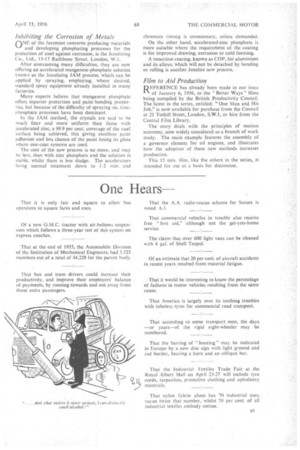One Hears
Page 39

If you've noticed an error in this article please click here to report it so we can fix it.
That it is only fair and square to allow bus operators to square fares and exes.
Of a new G.M.C. tractor with air-bellows suspension which follows a three-year test of this system on express coaches.
That at the end of 1955, the Automobile Division of the Institution of Mechanical Engineers, had 3,323 members' out of a total of 44,229 for the parent body.
That bus and tram drivers could increase their productivity, and improve their employers' balance of payments, by running towards and not away from those extra passengers. That the A. A. radio-rescue scheme for Sussex is voted Al. —0 That commercial vehicles in trouble also receive free "first aid," although not the get-you-home service.
The claim that over 600 light vans can be cleaned with 4 gal. of Shell Teepol.
Of an estimate that 20 per cent. of aircraft accidents in recent years resulted from material fatigue.
That it would be interesting to know the percentage of failures-in motor vehicles resulting from the same cause.
That America is largely over its teething troubles with tubeless tyres for commercial road transport.
That according to some transport men, the days —or years—of the rigid eight-wheeler may be numbered.
That the barring of " hooting " may be indicated in Europe by a new disc sign with light ground and red border, bearing a horn and an oblique bar.
That the Industrial Textiles Trade Fair at the Royal Albert Hall on April 23-27 will include tyre cords, tarpaulins, protective clothing and upholstery materials.
That nylon fabric alone has 70 industrial uses, rayon twice that number, whilst 70 per cent, of all industrial textiles embody cotton.




















































































































